Do I need a visa to visit Norway?
Mar 20, 2024 • 5 min read
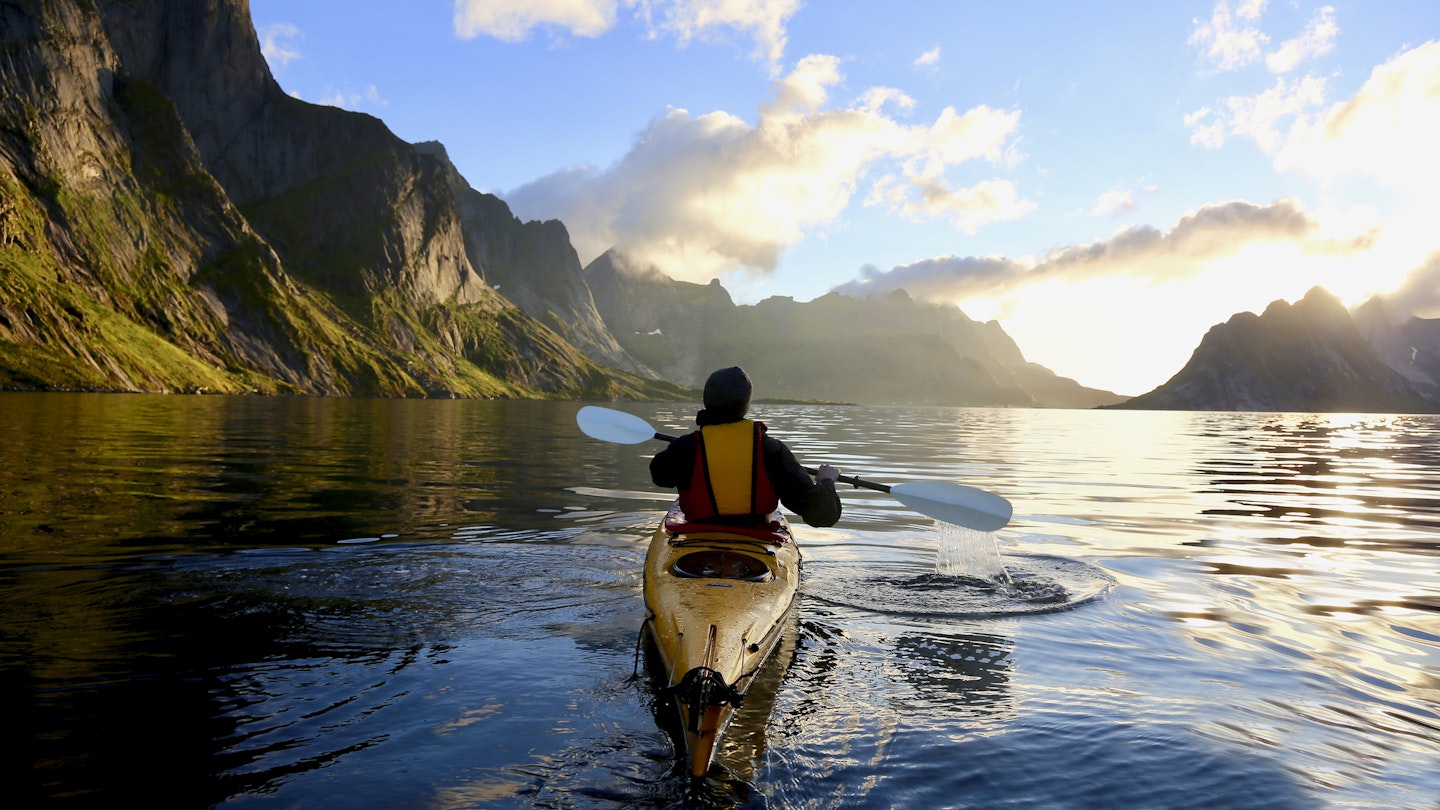
Gaining access to Norway's towns, mountains and fjords isn't too tricky for most travelers © Peter Sundt / 500px
Like most countries in the Schengen area, Norway is easy to travel to if you’re from a country within the EU or EEA. If you live elsewhere, your dream trip to the land of the fjords, Vikings and northern lights could take a little more planning and may require a tourist visa.
Here's everything you need to know about tourist visa requirements for Norway, including information about Schengen visas, how much it costs and how to apply.

What is the Schengen area?
Although Norway is not a member of the EU, it is a member of the EEA, and it’s one of the 26 countries that form the Schengen area.
When you’re granted a visa to any of the countries in the Schengen zone, your visa is also valid for travel to any of the other Schengen countries. This is why you’ll often hear the term “Schengen visa.”
The countries in the Schengen area are: Austria, Belgium, Croatia, Czech Republic, Denmark, Estonia, Finland, France, Germany, Greece, Hungary, Iceland, Italy, Latvia, Liechtenstein, Lithuania, Luxembourg, Malta, The Netherlands, Norway, Poland, Portugal, Slovakia, Slovenia, Spain, Sweden and Switzerland.
You’ll need to go through passport control when you’re entering and leaving the Schengen area. You don’t usually have to show your passport when you’re crossing the border between Schengen countries.

Who doesn't need a visa to travel to Norway?
Eu/eea citizens.
If you’re a citizen or recognized resident of an EU or EEA country (and Switzerland), you don’t need a tourist visa to travel to Norway, and you can stay for up to three months.
There’s no minimum period of time you have to wait before you can return, but you must have proof that you’ve left the country. You’ll need a valid travel document to visit, such as a European Union ID card or passport.
Citizens of other countries
Norway also has agreements with several countries outside of the EU/EEA, allowing their citizens to travel to Norway without a visa. These countries include the United Kingdom, USA, Canada, Mexico, Australia, New Zealand and Japan, among others.
Even if you don’t require a visa to travel to Norway, you need to be aware of some conditions for visiting. These include:
- you can stay in any of the countries in the Schengen area (including Norway) for a combined total of 90 days in any 180-day period
- your passport must be valid for at least three months after you leave Norway
- you must have means of traveling back to your country of residence
- you should not be planning to work
- you should have at least NOK 500 for each day you’re staying in Norway.
This isn’t an exhaustive list – be sure to check the Norwegian Directorate of Immigration (UDI) website for full details before you travel.

Travelers who need a visa
If you want to travel to Norway as a tourist and you’re not on the visa-free list, you’ll need to apply for a visitor’s visa. Citizens of countries including China, India and South Africa require a visa to travel to Norway.
The following general guidance applies to most countries. Check the specific requirements for your country, including current visa costs, at udi.no .
Applying for a visa
To apply for a visitor’s visa, you’ll normally need to register your application online and then visit a Norwegian embassy, consulate, or Visa Application Center in person with all the required documents.
A visitor’s visa is valid for travel throughout the Schengen area – including Norway – for up to 90 days in any 180-day period. You should submit your visa application at least four weeks in advance, but you can apply up to six months before your trip.
If you’re traveling to several Schengen countries on the same trip, you should apply for a visa for your main destination. This is normally the country you’re staying in the longest or the one you’ll be arriving at.
When you apply, you’ll need to state how many entries you require on your visa. This is especially important if you’re going on a multi-country trip that involves traveling outside of the Schengen area (for example, to the UK or Russia), and then returning.
At the time of writing, the standard fee for a visitor’s visa is €80 for adults and children over 12 years old.
Extending your visa
Schengen visas (and therefore visas for Norway) cannot be extended. Once you’ve reached 90 days, you must leave the Schengen area or apply for a residence permit.
If you’ve left the Schengen zone and want to re-enter, but you’ve used up the number of entries on your original visa, you’ll need to apply for a new Schengen visa.
Working holiday visa in Norway
Norway doesn’t have a specific working holiday visa scheme, but seasonal workers in some industries, for example in agriculture, can be granted special permits.
That said, Visit Norway does promote traveling to the country for a “ workation .” This means that you could work as a digital nomad, doing your regular job remotely from the fjords or deep within the Arctic Circle. Be sure to check the conditions of your own visa before traveling for this purpose.
Traveling to Svalbard
Although Svalbard is a Norwegian territory, it has different rules for travel than the rest of the country. In particular, Svalbard is not in the Schengen area, but you’ll have to travel through the zone to reach it. If you plan to go to Svalbard, make sure that you have enough entries on your visa to cover your visit. For more information, visit sysselmesteren.no .
This article was first published October 2021 and updated March 2024
Explore related stories

Destination Practicalities
Mar 30, 2024 • 4 min read
Who wouldn't jump at the chance to visit the Emerald Isle? Here’s how to check if you need a visa before setting off on your Irish adventure.

Mar 22, 2024 • 4 min read

Mar 20, 2024 • 8 min read

Mar 19, 2024 • 9 min read

Mar 18, 2024 • 5 min read

Mar 18, 2024 • 6 min read

Mar 14, 2024 • 8 min read

Mar 10, 2024 • 6 min read

Jan 19, 2024 • 11 min read

Jan 16, 2024 • 8 min read
Travel to Norway
Terje Rakke/Nordic Life - Visitnorway.com
How to travel to Norway
You will find a wide selection of travel options to Norway. Norway shares land borders with Sweden, Finland and Russia.
Crossing borders are usually hassle-free, but all travellers - other than citizens from Sweden, Denmark , Iceland and Finland - require a passport to enter Norway.
Flights to Norway
Norway is well served by domestic airlines with about 50 airports and airfields.
The biggest airport is Oslo Airport, Gardermoen, 45km (28 miles) northeast of Oslo. Here most of the international traffic arrives and is served by several international airlines and regional carriers like SAS, British Airways, Norwegian Air, Finnair and Widerøe. The airport has flights from around 140 destinations abroad. Often you have to change planes to reach your final destination in Norway.
Other international airports in Norway are located close to Bergen , Kristiansand, Moss, Sandefjord, Stavanger, Tromsø, and Trondheim.
From Oslo Airport, it is easy to reach Oslo city centre in 20 minutes by Flytoget Airport Express Train. Express buses and local trains are also available.
International flights to Norway
There are direct flights to Norway from the East and West of the continental USA and several European destinations. If you travel from Australia or New Zealand, you'll need to connect via an airport in Asia, the Middle East, or Europe.
See more: Airports in Norway
Travel by train
Numerous rail services have connections to other places in the Nordic countries and the rest of Europe. There are frequent connections to Oslo from Copenhagen, Stockholm and Götenborg . It is also possible to get to northern Norway from Stockholm , with Trondheim and Narvik as the main destinations.
NSB, the Norwegian Railways, serve the national trains.
Most rail journeys from Europe are overnight, and all have sleeping compartments. A variety of discount passes is available for train travel in Europe and Norway.
Travel by boat
It is possible to take a ferry between Norway and Denmark, Sweden, Germany and the UK. Most ferry operators offer package deals that include both cars and passengers.
Cruises to Norway
There are several cruise lines in Norway and many popular cruise destinations. Many are sailing to the Norwegian Fjords and the seaside city of Bergen, but cities such as Tromsø, Hammerfest, Trondheim, and Ålesund are on many itineraries.
Travel by car
Most visitors arrive in Norway by car from Sweden, but it is also possible from Finland and Russia.
The major road going to Norway is European route E6. It runs from Sweden, and you are crossing the border at Svinesund in southeast Norway.
From Finland, you take E8, which runs through Turku , Vaasa and Oulu before you cross the border at Kilpisjärvi.
Passport control checks are at the Norwegian-Russian land border crossing between Borisoglebsky and Storskog.
How to get to Norway

Airports in Norway

Trains to Norway
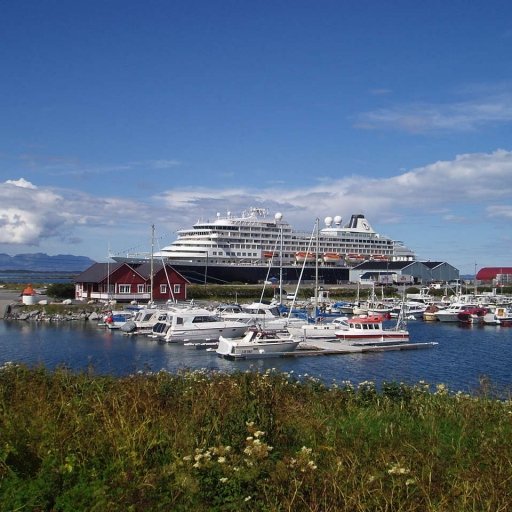
Ferries to Norway from Denmark

Buses to Norway
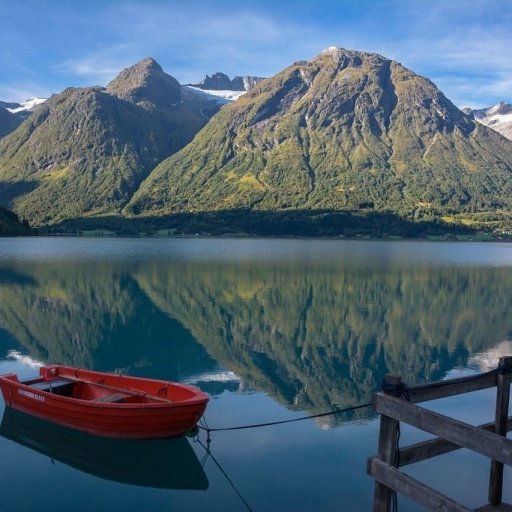
Weather in Norway
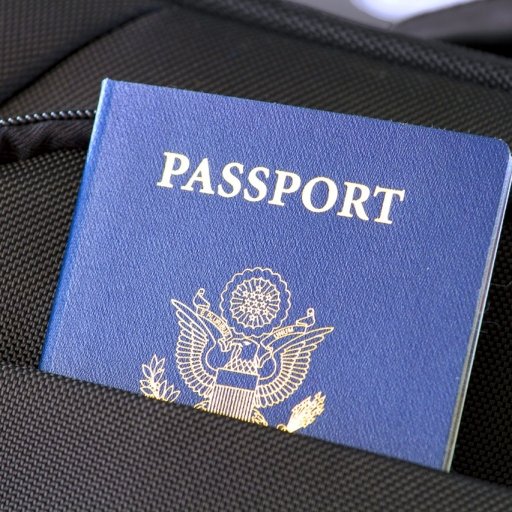
Visa to Norway
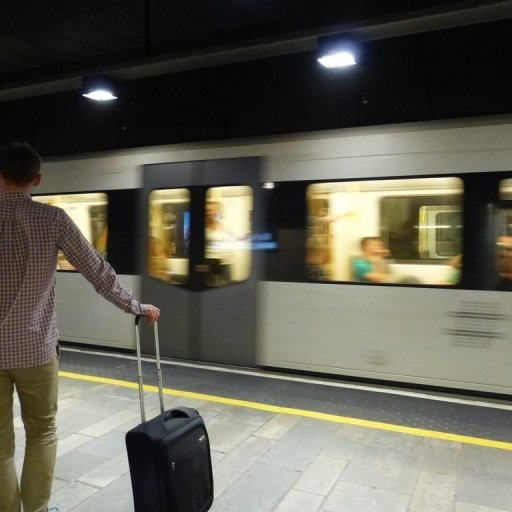
Getting Around in Norway
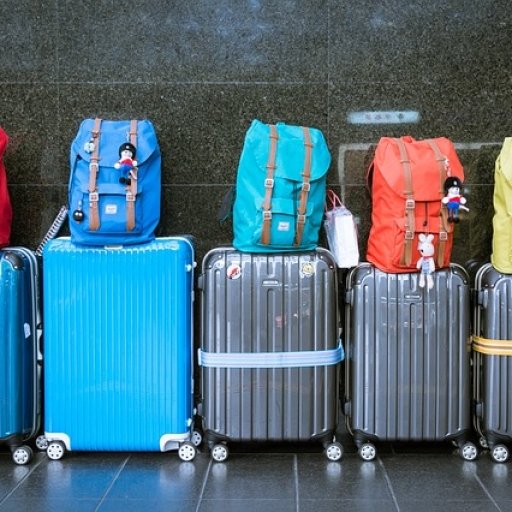
What to Pack
Explore more.
- Oslo Airport
- Bergen Airport
- Tromsø Airport
- Kirkenes Airport
- SAS Airlines
- American Airlines
- Finnair Airlines
- Iceland Air
- Nordic Countries
- Inspiration
- Heritage & Culture
- Nature & Activities
- Design & Shopping
- Nordic Vikings
- Seasons & Weather
- Visitnordic
- Privacy Policy
- Terms of Use
- Become a Partner

Cookies on GOV.UK
We use some essential cookies to make this website work.
We’d like to set additional cookies to understand how you use GOV.UK, remember your settings and improve government services.
We also use cookies set by other sites to help us deliver content from their services.
You have accepted additional cookies. You can change your cookie settings at any time.
You have rejected additional cookies. You can change your cookie settings at any time.
- Passports, travel and living abroad
- Travel abroad
Travelling to the EU and Schengen area
You do not need a visa for short trips to the EU or countries in the Schengen area if both of the following apply:
- you’re staying for 90 days or less in a 180-day period
- you’re visiting as a tourist or for certain other reasons
Other reasons include:
- studying a short course
- getting medical treatment
- travelling for business for your UK employer, for example to attend a business meeting or conference
- journalism or other media activities
Check the entry requirements of the country you’re visiting to find out what you can and cannot do during your stay.
These rules do not apply to travelling and working in Ireland .
Travelling to countries in the Schengen area for up to 90 days in a 180-day period
You can travel to more than one country in a 180-day period. How long you can stay in each country depends on whether or not it’s in the Schengen area.
The countries in the Schengen area are:
Austria, Belgium, Croatia, Czech Republic, Denmark, Estonia, Finland, France, Germany, Greece, Hungary, Iceland, Italy, Latvia, Liechtenstein, Lithuania, Luxembourg, Malta, Netherlands, Norway, Poland, Portugal, Slovakia, Slovenia, Spain, Sweden, and Switzerland.
Your total stay in the Schengen area must be no more than 90 days in every 180 days. It does not matter how many countries you visit. The 180-day period keeps ‘rolling’.
To work out if your stay is within the 90 day limit, use the following steps.
Check the date you plan to leave the Schengen area on your next trip.
Count back 180 days from that date to get the start of the 180-day period.
Add up the number of days you have already spent in the Schengen area in that 180-day period (you can use the dates stamped in your passport showing when you entered and left a country).
Work out how many days you will spend in the Schengen area on your next trip. Add this number to the number of days you worked out in step 3.
Check that the total number of days is not more than 90.
Travelling to EU countries that are not in the Schengen area
Bulgaria, Cyprus and Romania are not in the Schengen area. You can stay up to 90 days in a 180-day period in each of these countries without a visa.
Any time you spend in the Schengen area does not affect the number of days you can spend in these countries.
When you may need a visa
You may need a visa or permit if you want to either:
- stay for more than 90 days
If you’re travelling for work, check the rules for the country you’re visiting .
If you’re travelling for another reason or staying longer than 90 days, check the entry requirements for the country you’re visiting .
Related content
Is this page useful.
- Yes this page is useful
- No this page is not useful
Help us improve GOV.UK
Don’t include personal or financial information like your National Insurance number or credit card details.
To help us improve GOV.UK, we’d like to know more about your visit today. We’ll send you a link to a feedback form. It will take only 2 minutes to fill in. Don’t worry we won’t send you spam or share your email address with anyone.
Update April 12, 2024
Information for u.s. citizens in the middle east.
- Travel Advisories |
- Contact Us |
- MyTravelGov |
Find U.S. Embassies & Consulates
Travel.state.gov, congressional liaison, special issuance agency, u.s. passports, international travel, intercountry adoption, international parental child abduction, records and authentications, popular links, travel advisories, mytravelgov, stay connected, legal resources, legal information, info for u.s. law enforcement, replace or certify documents.
Before You Go
Learn About Your Destination
While Abroad
Emergencies
Share this page:
Travel Advisory July 26, 2023
Norway - level 1: exercise normal precautions.
Reissued with obsolete COVID-19 page links removed.
Exercise normal precautions in Norway.
Read the country information page for additional information on travel to Norway.
If you decide to travel to Norway:
- Enroll in the Smart Traveler Enrollment Program ( STEP ) to receive travel alerts and make it easier to locate you in an emergency.
- Follow the Department of State on Facebook and Twitter .
- Review the Country Security Report for Norway.
- Visit the CDC page for the latest Travel Health Information related to your travel.
- Prepare a contingency plan for emergency situations. Review the Traveler’s Checklist .
Embassy Messages
View Alerts and Messages Archive
Quick Facts
Six months recommended
Not required for stays under 90 days
25,000 Norwegian Kroner (or equivalent), not including traveler’s checks
25,000 Norwegian Kroner (or equivalent), without prior approval
Embassies and Consulates
U.s. embassy oslo.
Morgedalsvegen 36, 0378 Oslo, Norway Mailing address: PO Box 4075 AMB, 0244 Oslo, Norway Telephone: +(47) 2130-8540 Emergency After-Hours Telephone: +(47) 2130-8540 Fax: +(47) 2256-2751 Email: [email protected]
Destination Description
Learn about the U.S. relationship to countries around the world.
Entry, Exit and Visa Requirements
COVID-19 Requirements
There are no COVID-related entry requirements for U.S. citizens.
Visit the Royal Norwegian Embassy website for the most current visa information.
Traveling Through Europe: If you are planning to visit or travel through European countries, you should be familiar with the requirements of the Schengen Agreement.
- Your passport should be valid for at least three months beyond the period of stay if you plan on transiting a Schengen country; review our U.S. Travelers in Europe page .
- You will need sufficient proof of funds and a return plane ticket.
- For additional information about visas for the Schengen area, see the Schengen Visa page.
HIV/AIDS Restrictions: The U.S. Department of State is unaware of any HIV/AIDS entry restrictions for visitors to or foreign residents of Norway.
Find information on dual nationality , prevention of international child abduction , and customs regulations on our websites.
Safety and Security
Terroris m: Terrorist groups and those inspired by such organizations are intent on attacking U.S. citizens abroad. Terrorists are increasingly using less sophisticated methods of attack – including knives, firearms, and vehicles – to more effectively target crowds. Frequently, their aim is unprotected or vulnerable targets, such as:
- High-profile public events (sporting contests, political rallies, demonstrations, holiday events, celebratory gatherings, etc.)
- Hotels, clubs, and restaurants frequented by tourists
- Places of worship
- Shopping malls and markets
- Public transportation systems (including subways, buses, trains, and scheduled commercial flights)
For more information, see our Terrorism page.
Crime: Norway has a low level of crime and violent crime is uncommon.
- The most likely forms of crime, especially in the Oslo metropolitan area, include residential and office burglaries and petty thefts.
- Pickpocketing and petty theft occur more frequently in major tourist areas, hotel lobbies, train and transit stations, and surrounding areas. The Oslo Central train station is an especially popular area for pickpockets and bag snatchers.
- Although rare, violent and weapons-related crimes do occur in areas known to have drug trafficking and gang problems, such as certain parts of eastern Oslo. As in any other urban area, you should remain aware of your surroundings at all times.
International Financial Scams: See the Department of State and the FBI pages for information.
Victims of Crime: Report crimes to the local police by dialing 112 and contact the U.S. Embassy at +(47) 2130-8540. Remember that local authorities are responsible for investigating and prosecuting the crime.
See our webpage on help for U.S. victims of crime overseas .
- help you find appropriate medical care
- assist you in reporting a crime to the police
- contact relatives or friends with your written consent
- explain the local criminal justice process in general terms
- provide a list of local attorneys
- provide information on victim’s compensation programs in the United States
- assist you in accessing Norway’s program to provide financial compensation to victims who suffer serious criminal injuries, via the Norwegian Criminal Injuries Compensation Authority .
- provide an emergency loan for repatriation to the United States and/or limited medical support in cases of destitution
- help you find accommodation and arrange flights home
- replace a stolen or lost passport
Domestic Violence: U.S. citizen victims of domestic violence may contact the Embassy for assistance. Victims may also contact:
Police (non-emergency) 02 800 Oslo Emergency Room 116 117 Helpline for Children and Youth 116 111 Hotline for Victims of Sexual Assault 800 57 000 DIXI Center for Victims of Rape 22 44 40 50 Oslo Crisis Center 22 48 03 80 National Association for Victims of Crime 22 16 40 00
Tourism: The tourism industry is generally regulated, and rules are regularly enforced. Hazardous areas/activities are usually identified with appropriate signage and professional staff is typically on hand in support of organized activities. In the event of an injury, appropriate medical treatment is widely available throughout the country. Outside of a major metropolitan center, it may take more time for first responders and medical professionals to stabilize a patient and provide life-saving assistance. At certain times of year, there are increased risks of avalanche and hidden crevasses in mountainous areas throughout Norway. Rapid weather changes may also create hazards in backcountry areas. We encourage you to check with local authorities and websites showing current conditions before engaging in outdoor sporting activities. If you plan to travel to Svalbard, please see more information below. U.S. citizens are encouraged to purchase medical evacuation insurance .
Local Laws & Special Circumstances
Criminal Penalties: You are subject to local laws. If you violate local laws, even unknowingly, you may be deported, arrested, or imprisoned. For instance, it is generally illegal to carry knives or other sharp objects in Norway. Individuals establishing a business or practicing a profession that requires additional permits or licensing should seek information from the competent local authorities before practicing or operating a business.
Furthermore, some laws are also prosecutable in the United States, regardless of local law. For examples, see our website on crimes against minors abroad and the Department of Justice website.
Arrest Notification: If you are arrested or detained, ask police or prison officials to notify the U.S. Embassy immediately. See our webpage for further information.
Svalbard: The Svalbard archipelago consists of nine main islands located midway between mainland Norway and the North Pole. You need a passport to enter Svalbard.
- Unlike Norway’s mainland, Svalbard is not party to the Schengen Agreement and air travelers to Svalbard from Norway will depart the Schengen Zone prior to boarding.
- Travelers to Svalbard face unique hazards given the extreme weather conditions and limited transport infrastructure.
- The U.S. Embassy has no direct representation on Svalbard, limiting its ability to provide emergency consular services.
- Verify that you have adequate travel, medical, and medical evacuation insurance to cover the potential costs of medical treatment or repatriation before you travel to Svalbard.
- Although road systems exist within the three largest towns – Longyearbyen, Barentsburg, and Ny-Alesund – they do not connect with each other, making sea, snowmobile, or limited air service the only options for traveling throughout Svalbard.
- Tourism to Ny-Alesund is restricted due to its status as a research facility and the danger of polar bear attacks.
- There have been several reported instances of death or injury to tourists in the Svalbard archipelago due to animal attacks and boating incidents, often involving unpredictable weather or ocean conditions.
- In cases of illness or injury, a clinic in Longyearbyen can provide limited emergency care until medical evacuation to Tromsoe is available.
- You should consult the Svalbard Tourist Board for the latest travel conditions and information before you go.
Counterfeit and Pirated Goods: Although counterfeit and pirated goods are prevalent in many countries, they may still be illegal according to local laws. You may also pay fines or have to give them up if you bring them back to the United States. See the U.S. Department of Justice website for more information.
Child Protection Laws: The treatment of children is taken very seriously in Norway. All forms of corporal punishment of children are against the law, and any form of violence, humiliating treatment, or neglect may result in the child being taken away from parents by the Norwegian authorities and placed into long-term care by Norway’s social services.
Faith-Based Travelers: See the following webpages for details:
- Faith-Based Travel Information
- International Religious Freedom Report – see country reports
- Human Rights Report – see country reports
- Hajj Fact Sheet for Travelers
- Best Practices for Volunteering Abroad
LGBTQI+Travelers: There are no legal restrictions on same-sex sexual relations or the organization of LGBTI events in Norway.
See our LGBTI Travel Information page and section 6 of our Human Rights report for further details.
Travelers with Disabilities: While in Norway, individuals with disabilities may find accessibility and accommodation very different from that in the United States.
- Oslo Gardermoen International Airport is accessible to wheelchair users and the staff is very helpful with accessibility issues.
- The Oslo subway/light-rail system (T-banen) has above-average wheelchair accessibility.
- Taxi drivers are generally helpful in assisting wheelchair users. It is possible to order taxis with wheelchair lifts.
- From December to March it is extremely difficult for wheelchair users to navigate Oslo’s streets without assistance due to snow and ice.
- Shopping malls, hotels, public buildings, and most modern structures will have accessible toilets.
- Fewer than half of the restaurants in Norway are wheelchair accessible and many have restrooms located up or down a flight of stairs.
- Many modern public structures, such as shopping centers, substitute inclined moving walkways/ramps for elevators, which are difficult for wheelchair users to use safely.
- Norway’s Tourist Board website offers accessibility information specifically for ferries.
Students : See our Students Abroad page and FBI travel tips .
Women Travelers: See our travel tips for Women Travelers .
Medical facilities are widely available and of high quality but may be limited outside larger urban areas. The remote and sparse populations in northern Norway and the dependence on ferries to cross fjords of western Norway may affect transportation and ready access to medical facilities. The U.S. Embassy in Oslo maintains a list of emergency medical and dental clinics in major cities.
We do not pay medical bills. Be aware that U.S. Medicare does not apply overseas.
Medical Insurance: Make sure your health insurance plan provides coverage overseas. Most care providers overseas only accept cash payments. See our webpage for more information on overseas coverage. Visit the U.S. Centers for Disease Control and Prevention for more information on type of insurance you should consider before you travel overseas.
We strongly recommend supplemental insurance to cover medical evacuation.
Vaccinations: Be up-to-date on all vaccinations recommended by the U.S. Centers for Disease Control and Prevention.
Further health information:
- World Health Organization
- U.S. Centers for Disease Control and Prevention (CDC)
Ambulance services are widely available.
Air Quality: Visit AirNow Department of State for information on air quality at U.S. Embassies and Consulates.
Health facilities in general:
- The U.S. Embassy maintains a list of doctors and hospitals . We do not endorse or recommend any specific medical provider or clinic.
- Adequate health facilities are available throughout the country, but health care in rural areas may be below U.S. standards.
- Medical staff may speak limited English.
- Generally, in public hospitals only minimal staff is available overnight in non-emergency wards.
- Patients bear all costs for transfer to or between hospitals.
- Psychological and psychiatric services are limited, even in the larger cities, with hospital-based care only available through government institutions.
Medical Tourism and Elective Surgery
- Visit the U.S. Centers for Disease Control and Prevention website for information on Medical Tourism, the risks of medical tourism, and what you can do to prepare before traveling to Norway.
- We strongly recommend supplemental insurance to cover medical evacuation in the event of unforeseen medical complications.
- Your legal options in case of malpractice are very limited in Norway.
Pharmaceuticals
- Exercise caution when purchasing medication overseas. Pharmaceuticals, both over the counter and requiring prescription in the United States, are often more difficult to obtain in Norway. Medication should be purchased in consultation with a medical professional and from reputable establishments.
- U.S. Customs and Border Protection and the Food and Drug Administration are responsible for rules governing the transport of medication back to the United States. Medication purchased abroad must meet their requirements to be legally brought back into the United States. Medication should be for personal use and must be approved for usage in the United States. Please visit the U.S. Customs and Border Protection and the Food and Drug Administration websites for more information.
- Norway does not allow the importation of some medications that are legal in the United States by prescription. Please review Norway’s rules on medications here .
Assisted Reproductive Technology and Surrogacy
Surrogacy is illegal in Norway.
Adventure Travel
- Visit the U.S. Centers for Disease Control and Prevention website for more information about Adventure Travel .
- The tourism industry is generally regulated, and rules are regularly enforced. Hazardous areas/activities are usually identified with appropriate signage and professional staff is typically on hand in support of organized activities.
- In the event of an injury, appropriate medical treatment is widely available throughout the country. Outside of a major metropolitan center, it may take more time for first responders and medical professionals to stabilize a patient and provide life-saving assistance.
- At certain times of year, there are increased risks of avalanche and hidden crevasses in mountainous areas throughout Norway. Rapid weather changes may also create hazards in backcountry areas. We encourage you to check with local authorities and websites showing current conditions before engaging in outdoor sporting activities.
- If you plan to travel to Svalbard, please see more information above. U.S. citizens are encouraged to purchase medical evacuation insurance. See our webpage for more information on insurance providers for overseas coverage .
Travel and Transportation
Road Conditions and Safety: The maintenance and condition of urban roads is generally good. Rural road conditions are fair, and the availability of roadside assistance is limited.
- Roadside assistance is mainly provided by two service providers in Norway: Viking (phone number +47 06000) and Falck (phone number +47 02222). Both service providers operate with 24/7 duty phones.
- Most roadways beyond the city limits of Oslo and other major cities tend to be simple two-lane roads. In mountainous areas of Norway, the roads tend to be narrow, winding, and have many tunnels.
- Road conditions vary greatly , depending on weather and time of year. Extreme weather, floods, and landslides can occur. This can disrupt both rail and road travel.
- The use of winter tires is mandatory on all motor vehicles from November to April.
- Many mountain roads are closed due to snow from late fall to late spring.
Traffic Laws: Norwegian law requires that drivers always use headlights when driving. Norwegian law also requires drivers to yield to vehicles coming from the right, except in a traffic circle, when drivers are required to yield to vehicles already in the circle.
- Seatbelts are mandatory for drivers and passengers.
- It is illegal to use a hand-held cell phone while driving; violators risk a fine of 1,300 kroner (approximately $215).
- Automatic cameras placed by the police along roadways help enforce speed limits, which are often lower than in other European countries. Fines – and sometimes even jail time – are imposed for violations.
- The maximum legal blood alcohol content level for driving a car in Norway is .02 percent. Police conduct frequent road checks with mandatory breathalyzer tests, and driving under the influence can lead to a stiff jail sentence.
Public Transportation: See our Road Safety page for more information. Visit the website of Norway’s Tourist Board and the Norwegian Council for Road Safety .
Aviation Safety Oversight: The U.S. Federal Aviation Administration (FAA) has assessed the government of Norway’s Civil Aviation Authority as being in compliance with International Civil Aviation Organization (ICAO) aviation safety standards for oversight of Norway’s air carrier operations. Further information may be found on the FAA’s safety assessment page .
Maritime Travel: Mariners planning travel to Norway should also check for U.S. maritime advisories and alerts . Information may also be posted to the U.S. Coast Guard homeport website , and the NGA broadcast warnings .
For additional travel information
- Enroll in the Smart Traveler Enrollment Program (STEP) to receive security messages and make it easier to locate you in an emergency.
- Call us in Washington, D.C. at 1-888-407-4747 (toll-free in the United States and Canada) or 1-202-501-4444 (from all other countries) from 8:00 a.m. to 8:00 p.m., Eastern Standard Time, Monday through Friday (except U.S. federal holidays).
- See the State Department’s travel website for the Worldwide Caution and Travel Advisories .
- Follow us on Twitter and Facebook .
- See traveling safely abroad for useful travel tips.
Review information about International Parental Child Abduction in Norway . For additional IPCA-related information, please see the International Child Abduction Prevention and Return Act ( ICAPRA ) report.
Travel Advisory Levels
Assistance for u.s. citizens, learn about your destination, enroll in step.

Subscribe to get up-to-date safety and security information and help us reach you in an emergency abroad.
Recommended Web Browsers: Microsoft Edge or Google Chrome.
Make two copies of all of your travel documents in case of emergency, and leave one with a trusted friend or relative.
Afghanistan
Antigua and Barbuda
Bonaire, Sint Eustatius, and Saba
Bosnia and Herzegovina
British Virgin Islands
Burkina Faso
Burma (Myanmar)
Cayman Islands
Central African Republic
Cote d Ivoire
Curaçao
Czech Republic
Democratic Republic of the Congo
Dominican Republic
El Salvador
Equatorial Guinea
Eswatini (Swaziland)
Falkland Islands
France (includes Monaco)
French Guiana
French Polynesia
French West Indies
Guadeloupe, Martinique, Saint Martin, and Saint Barthélemy (French West Indies)
Guinea-Bissau
Isle of Man
Israel, The West Bank and Gaza
Liechtenstein
Marshall Islands
Netherlands
New Caledonia
New Zealand
North Korea (Democratic People's Republic of Korea)
Papua New Guinea
Philippines
Republic of North Macedonia
Republic of the Congo
Saint Kitts and Nevis
Saint Lucia
Saint Vincent and the Grenadines
Sao Tome and Principe
Saudi Arabia
Sierra Leone
Sint Maarten
Solomon Islands
South Africa
South Korea
South Sudan
Switzerland
The Bahamas
Timor-Leste
Trinidad and Tobago
Turkmenistan
Turks and Caicos Islands
United Arab Emirates
United Kingdom
Vatican City (Holy See)
External Link
You are about to leave travel.state.gov for an external website that is not maintained by the U.S. Department of State.
Links to external websites are provided as a convenience and should not be construed as an endorsement by the U.S. Department of State of the views or products contained therein. If you wish to remain on travel.state.gov, click the "cancel" message.
You are about to visit:
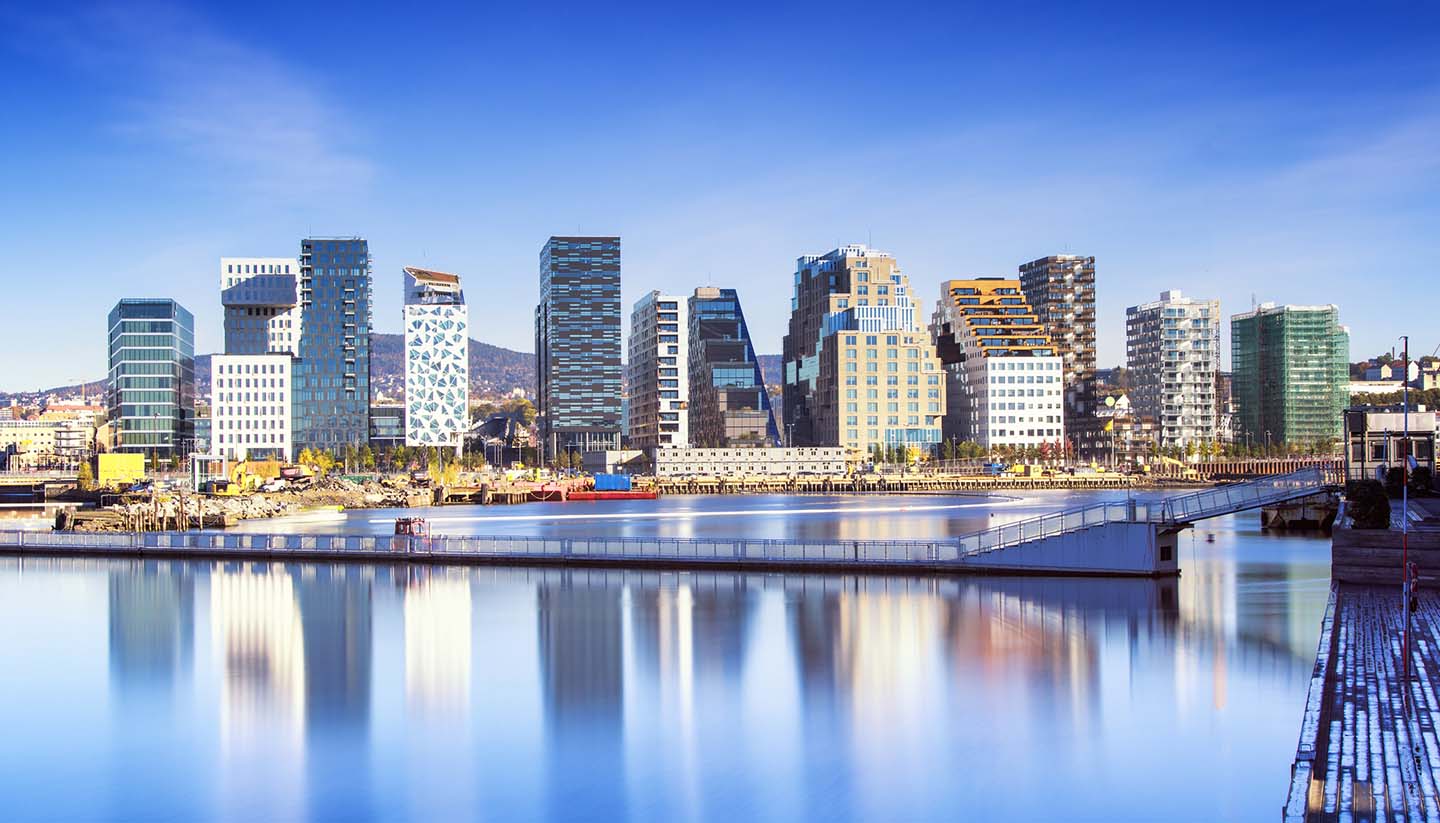
Introducing Norway
- About Norway
- Images of Norway
- History, language & culture
- Weather & geography
- Doing business & staying in touch
Plan your trip
- Travel to Norway
- Where to stay
While you’re there
- Things to see & do
- Shopping & nightlife
- Food & drink
- Getting around
Before you go
- Passport & visa
- Public Holidays
- Money & duty free
Book your flights
- Bergen Airport
- Oslo Airport
- Stavanger Airport
Ski Resorts
Cruise locations.
- Honningsvag
- Spitsbergen
Norway Visa and Passport Requirements
Norway is not a member of the European Union (EU), but it is a member of the Schengen Agreement and part of the Nordic Passport Union. This means it allows free movements of EU nationals for up to 90 days, but it welcomes free movements of Nordic nationals without restrictions.
EU nationals : When travelling from one border-free Schengen country to another by car, you are not required to show a passport or national ID card. However, transport providers like airlines, train operators and ferry companies will require you to show your passport or ID card to prove your identity.
Nordic nationals : No restrictions, although travel providers will still require you to produce a valid identification.
Non-EU nationals : You must have a valid passport issued within the past ten years and with at least six months left is required, along with a return ticket and sufficient funds for the length of stay.
Beware that EU members such as Cyprus and Ireland are not part of the Schengen area, so a passport or ID card is required if travelling to/from these countries.
EU nationals : You don't need a visa for Norway if the stay is less than 90 day. Those who plan to stay longer will need a residence permit. Non-EU nationals : Nationals mentioned in the chart above (Americans, Australians, British and Canadians) can travel to Norway, and any other Schengen countries, without a visa for up to 90 days in any 180-day period. This applies if you travel as a tourist, to visit family or friends, to attend business meetings, cultural or sports events. For other purposes, you need to check with the embassy, high commission or consulate of Norway in your home country on what type of visa and/or work permit you may need. The complete list of countries and territories whose nationals can visit Norway and any other Schengen countries for up to 90 days in a 180-day period are as follows: Albania, Antigua and Barbuda, Argentina, Australia, Bahamas, Barbados, Bosnia and Herzegovina, Brazil, Brunei, Canada, Chile, Colombia, Costa Rica, Dominica, El Salvador, Georgia, Grenada, Guatemala, Honduras, Hong Kong*, Israel, Japan, Kiribati, Liechtenstein, Macao*, Malaysia, Marshal Islands, Mauritius, Mexico, Micronesia, Moldova, Montenegro, New Zealand, Nicaragua, North Macedonia, Palau, Panama, Paraguay, Peru, Saint Kitts and Nevis, Saint Lucia, Saint Vincent and the Grenadines, Samoa, Serbia*, Seychelles, Singapore, Solomon Islands, South Korea, Switzerland, Taiwan*,Timor-Leste, Tonga, Trinidad and Tobago, Tuvalu, Ukraine, United Arab Emirates, United Kingdom, United States of America, Uruguay, Vanuatu* and Venezuela. * Hong Kong and Macao: holders of SAR passports do not need a visa. * Taiwan: holders of passports issued by Taiwan which include an identity card number do not need a visa. * Serbia: holders of biometric passports do not need a visa, excluding holders of passports issued by the Serbian Coordination Directorate. * Vanuatu: holders of passports issued on or after 25 May 2015 do not need a visa. • Nationals from micro-states within an EU country (Andorra, Monaco, San Marino and Vatican City) also do not need a visa.
For more information about Schengen visas, follow the link to the article A guide to Schengen visas .
ETIAS travel authorisation : Starting in mid 2025, all visitors who currently do not need a visa to visit 30 European countries will need to apply for an ETIAS travel authorisation .
Types and Cost
Schengen visa €80 for those who are above 12 years old, €40 for children aged six to 12, and free for children below six.
Nationals from Armenia, Azerbaijan and Kosovo pay €35.
In addition, the visa fee is waived for the following applicants: • School pupils, students, postgraduate students and accompanying teachers who undertake stays for the purpose of study or educational training. • Researchers from third countries travelling for the purpose of carrying out scientific research. • Representatives of non-profit organisations aged 25 years or less participating in seminars, conferences, sports, cultural or educational events organised by non-profit organisations. • Family members of EU/EEA (European Economic Area) citizens, falling under Directive 2004/38.
Up to 90 days in any 180-day period.
Citizens of some countries need an airport transit visa when transiting through international parts of any airports within the Schengen countries, whereas citizens of certain countries are only required a transit visa for some of the Schengen countries. If you are not from a Schengen visa exempt country, please check with a consulate of Norway near you.
Application to
Contact the embassy, high commission or consulate.
Schengen Visas
Norway is a Schengen country, so the Schengen visa scheme applies.
Temporary residence
EU nationals: Will need to register with the police and obtain a residence permit (issued by Directorate of Immigration) if the stay is more than 90 days.
Non-EU nationals: Will need a residence permit if the stay is more than 90 days.
Working days
Schengen visa applications usually take 15 to 21 calendar days, but sometimes up to 45 days. Be mindful of the national holidays in Norway as they may affect the processing time. It is recommended to submit applications at least four weeks prior to departure.
Sufficient Funds
Schengen visa applicants must be able to provide proof of funds to cover their stay.
Extension of stay
Schengen visa holders with a visa valid for less than 90 days can only extend their visas in exceptional circumstances, such as force majeure or for humanitarian reasons.
Entry with pets
When bringing a pet from another EU country, the animal must have a microchip or tattoo, an EU pet passport and a valid rabies vaccination certificate (the vaccination must have taken place at least 21 days prior to travel). Animals from outside the EU must also have an ISO 11784/11785 compliant 15-digit microchip. Depending on whether your pet is from a high-rabies country or a rabies-controlled country, your pet either has to be vaccinated first or microchipped first. For pets from high-rabies countries, a rabies titer test also has to be administered 30 days after the vaccination. A veterinary certificate issued by an authorised veterinarian is also required when entering Norway with a pet from outside of the EU.
Please check with the consulate directly for the appropriate procedures.
Embassies and tourist offices
British embassy in norway.
Mon, Tue, Thur and Fri 0900-1500.
Royal Norwegian Embassy in the UK
Mon-Fri 1000-1500 (general enquiries). Mon, Tue and Fri 1000-1230. Thurs 1220-1500 (enquiries to consular section).

Royal Norwegian Embassy in the USA
Mon-Fri 0900-1600 (Passports applications Mon-Fri 0900-1100. Appointment needed).

Related Articles

Norway: on the edge of the world
Chris Swindells ventures into the unspoiled Sognefjord and visits a real life fairy tale fjord village.
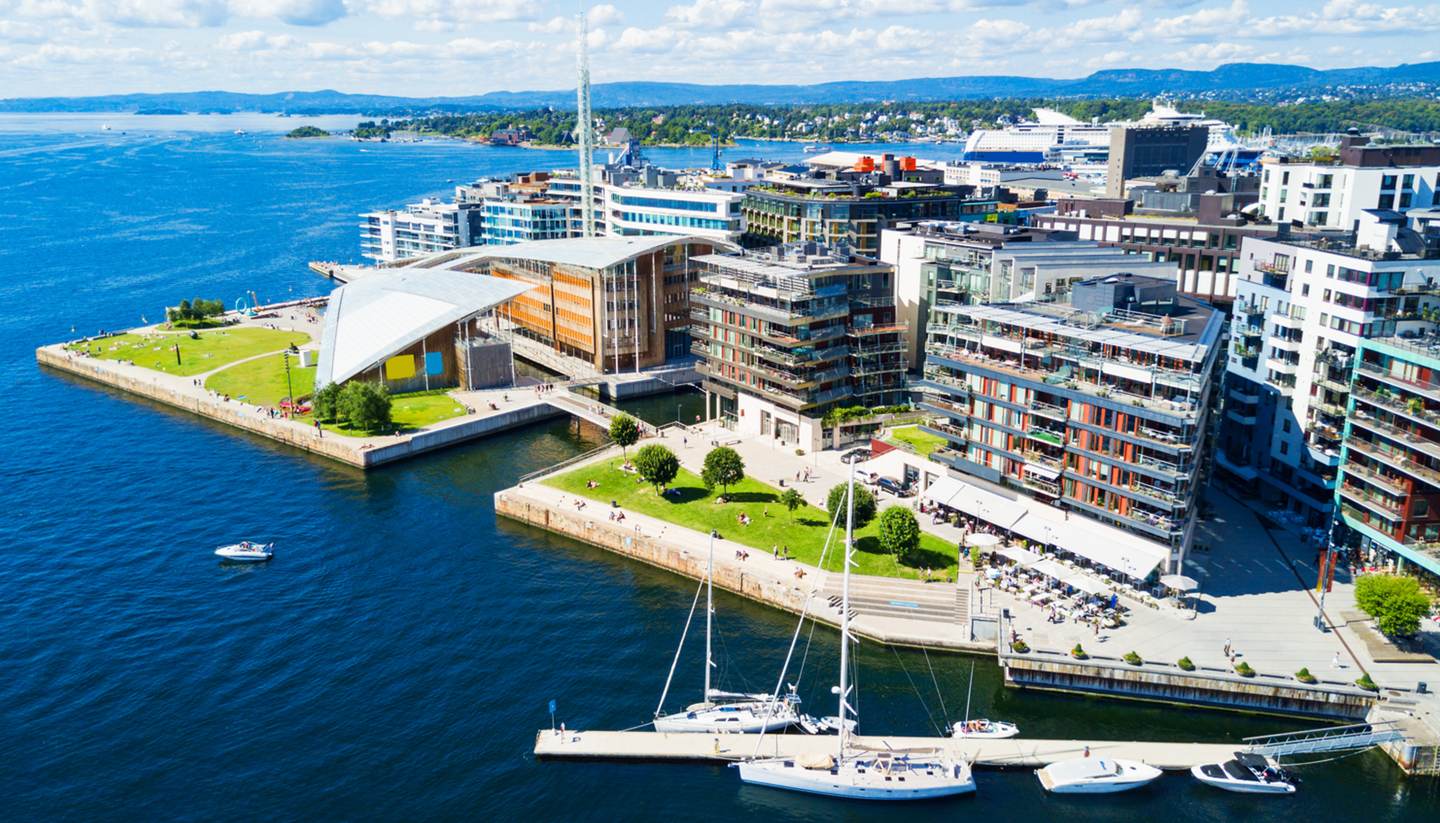
City Highlight: Oslo, Norway
Lush and green Oslo flaunts a plethora of fun outdoor activities, and a visit to this scenic Scandinavian city promises a taste of its rich Viking heritage too

Top 5 winter holiday ideas
The northern hemisphere is full of cities that come alive during the winter season. Here are five of the best winter holiday ideas
Book a Hotel
© Columbus Travel Media Ltd. All rights reserved 2024

Travel from EU to Norway: ID Card Accepted for Tourists?

Are you an EU citizen planning a trip to Norway and wondering if you can travel there with just your ID card? You’re in the right place! In this article, we’ll answer your question and give you all the information you need for a smooth and hassle-free trip to this beautiful Scandinavian country.
- 1 Can EU Citizens Travel to Norway with ID Card?
- 2 What is the Schengen Agreement?
- 3 What Do You Need to Travel to Norway with an ID Card?
- 4 Do You Need a Visa to Travel to Norway?
- 5 What Can You Do in Norway?
- 6 Final Thoughts
Can EU Citizens Travel to Norway with ID Card?
The short answer is yes, EU citizens can travel to Norway with just their ID card. This is because Norway is a member of the Schengen Agreement, which allows for free movement of people within its borders without the need for a passport. However, it is important to note that not all ID cards are accepted. Only national ID cards issued by EU/EEA member states and Switzerland are accepted as valid travel documents.
What is the Schengen Agreement?
The Schengen Agreement is a treaty signed in 1985 between five European countries – France, Germany, Belgium, Luxembourg, and the Netherlands – with the aim of abolishing internal borders and allowing for free movement of people and goods within their territories. Today, the Schengen Area comprises 26 European countries, including Norway, and covers most of the European Union (EU) as well as some non-EU countries such as Norway, Switzerland, and Iceland.
What Do You Need to Travel to Norway with an ID Card?
If you are an EU citizen planning to travel to Norway with just your ID card, you need to make sure that your ID card is valid and accepted as a travel document. You also need to make sure that you have your travel documents with you at all times during your trip. This includes your ID card, travel insurance, and any other relevant documents such as a visa or a vaccination certificate if required.
Do You Need a Visa to Travel to Norway?
If you are an EU citizen, you do not need a visa to travel to Norway as long as your stay does not exceed 90 days. You can enter Norway with just your valid ID card or passport. However, if you are planning to work or study in Norway, you may need to apply for a visa or a work permit depending on your circumstances.
What Can You Do in Norway?
Norway is a country of stunning natural beauty, with breathtaking fjords, mountains, and glaciers. It is also a country of rich cultural heritage, with medieval churches, historic cities, and traditional wooden architecture. Some of the top things to do in Norway include:
- Exploring the Norwegian fjords, either on a scenic drive or on a fjord cruise
- Hiking in the mountains and national parks, such as Jotunheimen, Rondane, and Hardangervidda
- Visiting the picturesque cities of Oslo, Bergen, and Trondheim
- Experiencing the Northern Lights and the Midnight Sun depending on the season
- Tasting the local cuisine, including seafood, meat, and dairy products
Final Thoughts
Now that you know that EU citizens can travel to Norway with just their ID card, it’s time to start planning your trip! Make sure to check your ID card’s validity and bring all the necessary travel documents with you. And don’t forget to pack your sense of adventure and wonder, as Norway is a country that will take your breath away with its natural and cultural wonders.
Similar Posts

Unraveling Norway’s Rich Drinking Traditions: A Complete Guide
Are you planning a trip to Norway and wondering about the drinking tradition in this beautiful country? You have…

The Definitive Guide: The Best Month to Witness Northern Lights in Norway
Have you ever dreamed of seeing the Northern Lights? Norway is one of the best places to experience this…
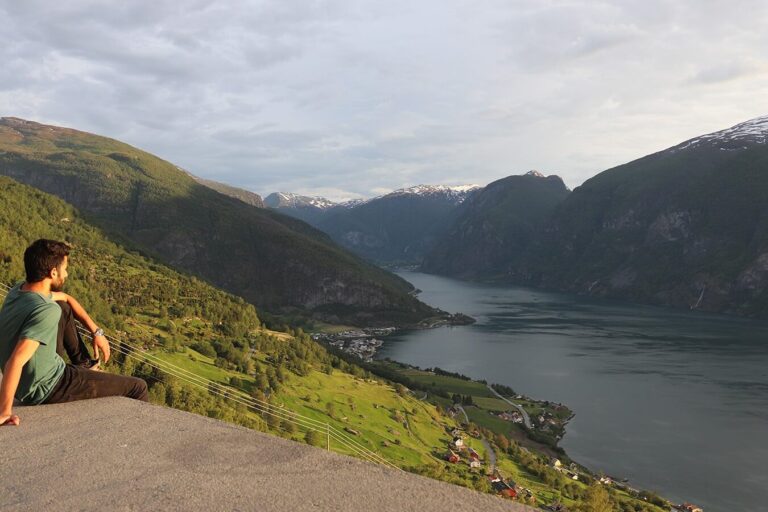
Bergen vs Oslo: A Comprehensive Comparison Guide for Your Norway Trip
Have you ever wondered which is better between Bergen and Oslo? Two of Norway’s most famous cities each have…

Discovering Norway’s Best Kept Secret: The Most Beautiful City Revealed!
Norway is a country that is blessed with a bountiful natural landscape. From the fjords to the mountain ranges…

Discover the Delicious and Healthy Norwegian Breakfast Options
Have you ever wondered what Norwegians eat for breakfast? Play on YouTube Contents1 Introduction: The Importance of Breakfast in…

Your Ultimate Guide to Understanding Norway Cruise Water Fees
Are you planning your next adventure and considering a Norwegian cruise? One of the questions that may come to…
Leave a Reply Cancel reply
Your email address will not be published. Required fields are marked *
We’re sorry, this site is currently experiencing technical difficulties. Please try again in a few moments. Exception: request blocked
ETIAS VISA WAIVER FOR NORWAY
Travel requirements to visit norway.
This website does not belong to, nor is it affiliated with, the EU. The official website of the European Union is europa.eu.
Norway is a member of the Schengen Area. Non-EU citizens from more than 50 countries can travel to Norway short-term without applying for a visa .
From 2025, travellers will need ETIAS to visit Norway visa-free.
That’s because the European Travel Information and Authorisation applies to all Schengen countries , including those, like Norway, that are not in the EU.
NORWAY IN THE SCHENGEN AREA
Norway signed the Schengen agreement on 19 December 1996 . The implementation of the agreement began on March 25th, 2001.
The country is not a member of the EU, but it is a member of the European Economic Area (EEA) , which sets a high standard of economic integration and common rules. Norway respects the 4 relevant freedoms established by the EEA: free movement of goods, persons, services, and capital.
Norway is a founding member of the European Free Trade Association , (EFTA). Along with Switzerland, Iceland, and Liechtenstein, it negotiates Free Trade Agreements with third countries through EFTA.
NORWAY AND EU RELATIONS
Unlike Sweden and Finland, Norway is not a member of the European Union . However, it maintains relations with the EU through its relationship with the European Economic Area (EEA), established in 1994.
The Norwegian Government’s strategy for cooperation with the EU is to contribute to a secure, safe, free, and economically strong Europe.
As a Schengen member, Norway will require foreign nationals from visa-exempt nations to have a valid ETIAS to enter its territory once the system is up and running.
Capital City: Oslo
Official language: Bokmal Norwegian and Nynorsk
Currency: Norwegian kroner
Population: Around 5.4 million
EU member state since: Norway is not an EU member State, however, it is a member of the European Free Trade Association
Norway officially accepts EES and ETIAS regulations
On 17 March 2023, Norway officially accepted the EU EES and ETIAS regulations .
The Entry-Exit System will record information about third-country nationals entering and departing the Schengen Area.
ETIAS required visa-exempt travellers to apply for a travel authorisation.
What you need to visit Norway based on nationality
What foreign visitors need to travel to Norway depends on their nationality. To find out which group you are in, check the Europe’s entry requirements .
Group 1: Citizens of Schengen countries
The Schengen Agreement promotes the free movement of people .
Norway is a member of the Schengen Area which means citizens of other member states can travel to Norway without border restrictions. There are no checkpoints between Schengen countries .
Group 2: Visa-exempt non-EU nationals
Citizens of more than 50 non-EU countries can travel to Norway from outside the Schengen Area without applying for a visa. Visa-free entry is permitted for short tourist and business visits.
Travellers in this group will need ETIAS starting 2025.
ETIAS for Norway
This is the new European visa waiver . Travellers need to register their basic personal and passport details online. The travel authorization is linked to the passport.
Group 3: Visa-required non-EU citizens
All other non-EU citizens need a Schengen visa to visit Norway. Norway issues Schengen visas which are valid across the travel area.
Schengen visa for Norway
This is the short-stay visa for non-exempt nationals. The application is presented at an embassy or consulate.
Tourism, business, and study in Norway with ETIAS
With ETIAS, visa-exempt visitors can travel to Norway for:
- Tourism : vacations, visiting family and friends, other leisure activities
- Business : meetings, conferences and other business events
- Study : short courses lasting up to 90 days
ETIAS holders can stay in Norway or the other Schengen countries for up to 90 days in any 180-day period.
Example. A traveller who in the last 6 months has spent 10 days in the Schengen Area can spend up to 80 more days in Norway or another Schengen country.
Visit Norway multiple times with ETIAS
With ETIAS, you can travel to Norway multiple times. ETIAS is valid for up to 3 years , or until the passport used to apply expires (whichever is sooner).
Visit other ETIAS countries with ETIAS
ETIAS is valid across the Schengen Area. Travellers who get ETIAS to travel to Norway can use the same authorisation to visit any of the other Schengen countries.
NORWAY’S BORDER CONTROLS: documentation required
To enter Norway’s territory, all visitors must meet the entry requirements . EU law determines its visa policy. The traveller’s nationality determines which requisites must be met to enter.
To cross an external Schengen border, all non-EU citizens need a passport valid for at least 3 months after the date they will exit the Schengen Area.
Visa-exempt travellers need ETIAS attached to their passport.
ADDITIONAL REQUIREMENTS FOR SCHENGEN VISA HOLDERS
In addition to a passport, Schengen visa holders also need the following documents:
- Proof of sufficient funds
- Return or onward travel tickets
- Accommodation reservation
Border authorities may ask visitors to provide the reason for their trip and the length of stay.
ARRIVING IN NORWAY: transport and ports of entry
ETIAS and Schengen visas are valid at air, land, and sea borders .
ARRIVING IN NORWAY BY AIR
The most important airport is Oslo Airport (OSL).
The airport is connected to the city centre via Flytoget Airport Express trains. There are local train services as well. Visitors may also take a taxi to reach the centre.
Flesland Airport is in Bergen and Flybussen connects it to downtown. There’s also a train that connects the city with the airport.
ARRIVING IN NORWAY BY RAIL
Scandinavian countries are well connected to the rest of Europe . Trains run regularly between Oslo, Copenhagen, Stockholm, and Gothenburg.
Many of the journeys take place overnight. Travellers will find sleeping compartments in trains.
ARRIVING IN NORWAY BY CAR
Visitors are likely to arrive in Norway by car when coming from Sweden, even though the country also borders with Russia and Finland.
Regardless of where you are travelling from customs checks are in place. When entering from Russia, visitors will find full passport control checks.
ARRIVING IN NORWAY BY BOAT
Regular ferry routes are available from Denmark, Germany, and Sweden. Most operators offer package deals for those travelling in their car.

Tourism in Norway with ETIAS
Norway is a popular destination for travellers interested in nature and scenery. ETIAS holders can visit the country on vacation for up to 90 days.
Reasons to visit Norway include:
- Geirangerfjord, a UNESCO World Heritage site There are several sightseeing and hiking trips available to experience the waterfalls.
- Lofoten Archipelago, a collection of islands. Here visitors will see traditional red fishermen’s cabins built along the coastline.
- Northern Lights, the aurora borealis are visible throughout the night during the Arctic winter (October to March).
- Bergen, a city set amid fjords and mountains. A must-see while exploring the city is the water district of Bryggen. Mount Floyen is the ideal spot to overlook the city.
- Arctic Cathedral, designed by Norwegian architect Jan Inge Hovig. Built in 1965, it was built to make it look like it was made with large blocks of ice.
Travelling to Norway from outside the EU: FAQs
What are the main ports of entry for international travellers arriving in norway.
The main ports of entry for international travellers arriving in Norway include:
- Oslo Airport (OSL), Oslo
- Bergen Airport (BGO), Flesland
- Stavanger Airport (SVG), Sola
- Trondheim Airport (TRD), Værnes
These airports offer flights from numerous global destinations, while other smaller airports serve regional flights.
Travellers can also enter Norway via ferry from Denmark, Germany, and Sweden or by car through border crossings with Sweden, Finland, and Russia.
Are there any restrictions on goods or items that can be brought into Norway?
Restrictions on goods in Norway include limits on alcohol and tobacco products , strict regulations on weapons and firearms, and prohibitions on illegal drugs and endangered species products.
Additionally, some food items, such as meat and dairy products, may be restricted depending on their origin.
What are the rules on travel insurance for visiting Norway?
Travel insurance is not mandatory for non-EU visiting Norway with ETIAS. Proof of insurance is required to apply for a Schengen visa.
Insurance is highly recommended for all travellers to Norway. Adequate travel insurance can cover medical expenses, trip cancellations, lost luggage, and other unforeseen events.
Are there any vaccination requirements for non-EU citizens travelling to Norway?
There are no specific vaccination requirements for non-EU citizens travelling to Norway.
However, due to the ever-changing nature of global health situations, it is essential to check the latest information before travelling, as new requirements may be introduced.
New requirements for Americans traveling to Europe postponed until 2025
Visitors who now travel visa-free will need to get approval prior to departure.
Americans eyed upcoming travel to European destinations slightly differently due to news of a requirement that was set to start in 2024 for U.S. passport holders. But now, EU officials have postponed the European Travel Information and Authorisation System ( ETIAS ) launch until spring of 2025.
SchengenVisaInfo.com, a website dedicated to the world's largest visa-free zone where 27 European countries abolished their internal borders known as the Schengen Area, first reported that an EU official confirmed ETIAS won't go live until May 2025, "due to continued delays with the introduction of the related Entry-Exit System (EES), which needs to be operational before ETIAS can be implemented."
An official for the European Union did not immediately respond to ABC News' request for comment.
What to know about ETIAS for US travelers
If you previously traveled to Europe without a visa, you will now need to apply for authorization through the ETIAS , before visiting.

Today, American travelers have visa-free access to 184 global destinations, according to the Henley Passport Index . And while the U.S. passport is currently ranked eighth-most powerful passport to own, that could be set to shift when the European Union adds its new documentation requirements for U.S. visitors.
The application form, which will be available on the official ETIAS website as well as a mobile application, has a fee of 7 euros or $7.79 U.S. dollars. All communication is done by email.
Once you are approved for travel, the authorization entitles visitors to stay in European countries that require ETIAS for up to 90 days within any 180-day period and travelers must be in possession of a valid ETIAS during their entire stay.
MORE: New warning issued for rebooking air travel after delays, cancellations
According to ETIAS, most applications should be processed within minutes, but in case an application takes longer, decisions will be sent within four days or up to 14 days if the applicant is asked to provide additional documentation.
The European Union encourages travelers to apply for an ETIAS authorization "well in advance of your planned journey."
Confirmation of application submission will be sent on email with a unique number that is needed for future reference.

Upon receiving ETIAS travel authorization, travelers are to ensure that their name, passport number and other information is correct because any mistake will prevent them from crossing the border.
If an application is refused, the email will include the reasons for the decision along with information about how to appeal.
ETIAS travel authorization is valid for three years, according to the EU, or until the travel document you used in your application expires, whichever comes first.
MORE: European heat wave breaking records with little relief in sight
The ETIAS authorization is linked to a person's travel document -- such as a U.S. passport -- and both documents will be needed to board a flight, bus or ship to enter any of the European countries that require ETIAS.
Similar to international border requirements with a passport, the ETIAS authorization doesn't guarantee automatic right of entry. "Border guards will verify that you meet the entry conditions" and anyone who does not meet the conditions "will be refused entry," according to the EU.
Click here to learn more about the process from the European Union.
An earlier version of this story was originally published on July 21, 2023.
Related Topics
Top stories.

3 US Marshals task force members killed, 5 officers shot in Charlotte
- 26 minutes ago

Immigrant battling cancer among trio who won $1.326 billion Powerball ticket
- 3 hours ago

Michael Cohen is cashing in on the Trump trial with TikTok livestreams
- Apr 29, 2:40 PM

Hunter Biden threatens to sue Fox News for airing 'revenge porn'
- Apr 29, 3:41 PM

Mother who went missing on bike ride died by homicide, autopsy shows
- Apr 29, 1:23 PM
ABC News Live
24/7 coverage of breaking news and live events
More From Forbes
How to see the best of northern europe on a scandinavian cruise.
- Share to Facebook
- Share to Twitter
- Share to Linkedin
Cruise ship passengers enjoy the view of Sweden’s Stockholm archipelago from the Royal Caribbean ... [+] ship ‘Serenade of the Seas.’
If you’ve ever wanted to dive into the culture of the Vikings or explore what makes people in the Nordic region the so-called happiest on earth, you could do a lot worse than book a Scandinavian cruise.
Scandinavia—and Norway in particular—is an expensive place to travel around, so a cruise can make financial sense for those seeking an introduction to the region. For one price, you get your travel, accommodation, meals, and entertainment covered.
Such a trip offers the opportunity to sample various Scandinavian travel highlights , whether you prefer the Scandinavian capitals, the stunning Norwegian fjords, or soaking up the atmosphere of beautiful islands and historic ports in the Baltic Sea.
Popular Scandinavian Cruise Itineraries
Many different types of itinerary can be advertised as Scandinavian cruises. Typically, they focus on the Nordic capital cities. Some may also include the highlights of the Baltic Sea region, including the Baltic countries and ports in the north of Germany and Poland.
With popular Norwegian fjords cruises together with midnight sun and northern lights tours to the north of Norway also available, there is a lot of diversity in Scandinavian cruises.
Scandinavian Capitals : Cruise itineraries starting in the U.K. or Germany and calling in at two or even all three of Oslo, Stockholm, and Copenhagen have long been popular.
WhatsApp Brand New iPhone Feature Just Launched That s Much Easier To Use
Apple’s iphone ai plans confirmed with new software upgrade, packers complete safety overhaul with georgia’s javon bullard.
The Nyhavn district of Copenhagen, Denmark, is a popular destination for cruise ship passengers ... [+] visiting Scandinavia.
Helsinki is often included on such itineraries. If you want to explore modern Scandinavia while gaining access to some of the region’s best museums, such an itinerary is a perfect choice.
Such itineraries tend to be shorter, and are a great introduction to both cruising and Scandinavia, with limited sea days and plenty to see and do while in port.
Baltic Sea : Longer Scandinavian itineraries often include stops at Baltic Sea islands and ports. The beautiful Estonian capital city, Tallinn, or the Latvian capital, Riga, are particular highlights, as are ports on the northern coastline of Germany and Poland.
For those interested in Viking history, look out for smaller ship itineraries featuring Visby on the wonderful island of Gotland .
One such trip is this 12-night itinerary from Celebrity Cruises, which includes a visit to both Visby and Tallinn. Other highlights include a visit to Stockholm and Copenhagen, including an overnight stop in the latter.
The old city walls of Visby on Gotland island, a popular cruise port.
Norwegian Fjords : By far the most variety can be found in the Norwegian fjords region , with almost all major cruise lines operating at least some itineraries here. Although port calls in Flåm and Geiranger will soon be severely limited, many alternative ports will still be able to welcome some of the world’s largest cruise ships.
Whether you prefer the action-packed ships of Royal Caribbean or MSC, or the smaller ships that can sail along narrower fjords, there will be a Norwegian fjords itinerary for you.
Following the recent rise in popularity of the region as a cruising destination, the fjords season has extended, with trips available as early as April and as late as September.
British line P&O Cruises operates its relatively new megaship Iona in the fjords region for much of that period, with regular departures from Southampton on a popular 7-day itinerary.
Midnight Sun : Although all summer cruises in the region will experience long summer days, specific midnight sun itineraries set sail for the far north of Norway to let guests experience the thrill of being outside with the sun in the sky at midnight. Many of these trips visit Honningsvåg, which allows guests to travel by bus to the North Cape.
Northern Lights : In recent years, Scandinavia—or more specifically Norway—has become a year-round cruising destination thanks to the growth in popularity of northern lights cruises .
Aurora borealis in the sky seen from a cruise ship in Arctic Norway.
These itineraries can be found heading north of the Arctic Circle between October and early April.
Planning Tips For Scandinavian Cruises
Cruising in Northern Europe offers a fantastic variety of excursions and experiences, from historical city tours to adrenaline-filled outdoor adventures.
The region’s love of the outdoors lifestyle means active experiences are easy to find, both through cruise line excursions and independent operators.
The high levels of English comprehension across the region means booking your own activities and exploring ports independently is much easier than in many other parts of the world. Even so, look for independent tours that take place earlier in the day to reduce any time-related risk.
No matter when you visit Scandinavia, pack for all weathers. The height of summer can be marred by heavy rainfall, while it’s possible to get sunburnt in the snow-covered conditions of February and March.
Pack a versatile wardrobe. Layered clothing accommodates the region's variable weather, while specialized gear might be necessary for specific excursions.
Cruising And Sustainability
Prospective travelers should be aware of environmental concerns associated with cruising in this pristine region. The industry is moving towards sustainability, with initiatives to introduce zero-emission vessels in sensitive areas, particularly the UNESCO-listed Norwegian fjords .
Some local initiatives protesting against cruise travel have also gathered momentum, so cruisers should be aware of these issues before setting foot ashore.

- Editorial Standards
- Reprints & Permissions

COMMENTS
Conclusion. As an EU resident, you can travel to Norway without a visa, as long as you bring a valid passport or national ID card with you. Non-EU citizens may need a visa to visit Norway, so it's important to check with the Norwegian embassy or consulate in your home country before you travel. Now that you know all the basics about traveling ...
FCDO travel advice for Norway. Includes safety and security, insurance, entry requirements and legal differences. ... If you choose to travel, ... Travel or do business in Europe: Brexit guidance ...
FCDO travel advice for Norway. Includes safety and security, insurance, entry requirements and legal differences. ... It is illegal to import whale meat from Norway into the UK or EU. You could ...
Documents you need for travel in the EU and Schengen countries. As an EU national, you have the right to travel freely in the 27 EU member countries as well as in Iceland, Liechtenstein, Norway and Switzerland (non-EU countries but members of the Schengen area) carrying either a valid passport or a national identity card (ID card).
Even if you don't require a visa to travel to Norway, you need to be aware of some conditions for visiting. These include: you can stay in any of the countries in the Schengen area (including Norway) for a combined total of 90 days in any 180-day period. your passport must be valid for at least three months after you leave Norway.
Entry to Norway for all citizens; EU/EEA citizen: Currently in Norway; Citizens of countries outside EU/EEA: Currently in Norway; Processing of visa applications. Due to the coronavirus outbreak, Norway will now normally reject applications for Schengen visas. Visas can only be granted in extraordinary situations.
Norway's travel restrictions in brief. From November 26, there will no longer be a travel ban. If you were entitled to enter Norway before the pandemic, you will be entitled to enter Norway now. From January 26, the mandatory entry quarantine period is lifted for all travellers. Most people who cannot prove vaccination status with an EU ...
EU/EEA citizens do not need a visa to visit Norway, and can stay for up to three months. If you wish to stay longer, you must register with the police. Please note that: You can stay in Norway for up to three months without registering with the police, providing you do not become an unreasonable burden for public welfare systems.
Most rail journeys from Europe are overnight, and all have sleeping compartments. A variety of discount passes is available for train travel in Europe and Norway. Travel by boat. It is possible to take a ferry between Norway and Denmark, Sweden, Germany and the UK. Most ferry operators offer package deals that include both cars and passengers.
From 5 July 2021, the travel advice was rescinded for the EU/EEA/Schengen area/UK, and for certain countries and regions on the EU's list of epidemiologically safe third countries. ... Can people from other countries travel to Norway? From 26 November 2021, all foreigners who have the right to enter Norway under the provisions of the ...
Travelling to EU countries that are not in the Schengen area. Bulgaria, Cyprus and Romania are not in the Schengen area. You can stay up to 90 days in a 180-day period in each of these countries ...
Call us in Washington, D.C. at 1-888-407-4747 (toll-free in the United States and Canada) or 1-202-501-4444 (from all other countries) from 8:00 a.m. to 8:00 p.m., Eastern Standard Time, Monday through Friday (except U.S. federal holidays). See the State Department's travel website for the Worldwide Caution and Travel Advisories.
By train. An extensive rail network links Norway to the rest of Scandinavia and Europe.There are regular train connections to Oslo from Copenhagen, Stockholm and Gothenburg. Most train journeys from the continent are overnight, and you will find sleeping compartments on all of them.A variety of discount passes are available for train travel in Europe and Norway.
Norway has started to accept and issue the EU Digital COVID-19 Certificate since June 24. This means that all Norwegian citizens, as well as citizens of other countries who hold the EU Digital COVID-19 pass, can travel freely and within the European countries and Norway without being subject to strict restrictions.
Non-EU nationals: Nationals mentioned in the chart above (Americans, Australians, British and Canadians) can travel to Norway, and any other Schengen countries, without a visa for up to 90 days in any 180-day period.This applies if you travel as a tourist, to visit family or friends, to attend business meetings, cultural or sports events. For other purposes, you need to check with the embassy ...
People who do not need a visa to visit Norway can stay in the country for up to 90 days. There are also certain other rules that you have to obey. Some people do not need a visa to visit Norway because they hold a passport from a country that Norway has a visa exemption agreement with. This also applies if you have a residence permit in an EU ...
Norway. Norway is stacked with superlatives — it's the most mountainous, most scenic, and most prosperous of all the Scandinavian countries. Perhaps above all, Norway is a land of intense natural beauty, its famously steep mountains and deep fjords carved out and shaped by an ancient ice age. On a sunny day, Norway exudes an "I could live ...
The short answer is yes, EU citizens can travel to Norway with just their ID card. This is because Norway is a member of the Schengen Agreement, which allows for free movement of people within its borders without the need for a passport. However, it is important to note that not all ID cards are accepted. Only national ID cards issued by EU/EEA ...
Stunning fjords. Cosy, compact cities. Magical northern lights. Plan your trip, discover great offers, and read our insider guides and inspiring feature articles about people, places and our quirky traditions. So that you get the most out of your trip!
Check what travel documents you'll need to cross the border into another EU country. And find out what documents you need for your spouse, children or other relatives if they are not EU nationals. More on: Travel documents for EU nationals. Travel documents for non-EU family members. Travel documents for non-EU nationals.
Country-Specific Information: As of February 12, 2022, the travel-restrictions upon entry into Norway were lifted. The same rules as prior to the COVID-19 pandemic apply. There are no requirements for testing, quarantine or registration upon arrival in Norway. Visit the Norwegian government website for further updates regarding testing ...
Group 2: Visa-exempt non-EU nationals. Citizens of more than 50 non-EU countries can travel to Norway from outside the Schengen Area without applying for a visa. Visa-free entry is permitted for short tourist and business visits. Travellers in this group will need ETIAS starting 2025.
In addition to the 25 EU nations, the four non-EU nations of Iceland, Liechtenstein, Norway and Switzerland are included in the zone, too. Micronations like Andorra, Monaco, San Marino and Vatican City are de facto members too, as they have border agreements with Spain, France and Italy.
Jenny Kane/AP, FILE. Americans eyed upcoming travel to European destinations slightly differently due to news of a requirement that was set to start in 2024 for U.S. passport holders. But now, EU ...
Scandinavia—and Norway in particular—is an expensive place to travel around, so a cruise can make financial sense for those seeking an introduction to the region.